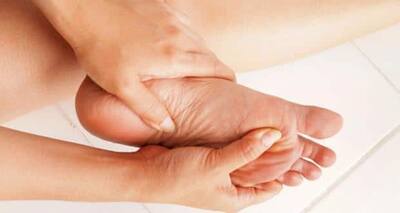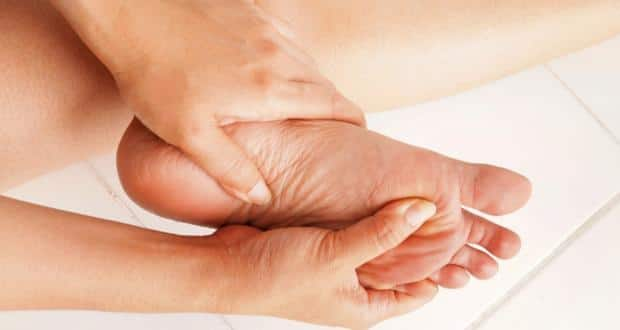Don’t Miss Out on the Latest Updates.
Subscribe to Our Newsletter Today!
Diabetic Gangrene -- causes, symptoms, treatment

About one in three diabetic individuals will surely develop a foot ulcer during their lifetime, which if left untreated may develop into diabetic foot gangrene.
 Consider the following facts:
Consider the following facts:
- About one in three diabetic individuals will surely develop a foot ulcer during their lifetime, which if left untreated may develop into diabetic foot gangrene.
- About 85 percent of all limb amputations in diabetic individuals are followed by foot ulcers.
- Every 30 seconds, a lower limb amputation is carried out due to diabetes throughout the world.
- The mortality rate due to diabetic foot gangrene is just next to cancer death rate.
How do diabetics develop foot infections?
Diabetes predisposes an individual to several changes in the body and causes known problems such as heart disease, stroke, blindness, kidney problems and nerve dysfunction. Nerve dysfunction is one of the reasons of foot ulcers in diabetic individuals. It is often painless and may cause numbness in the feet which signals danger because the sensation of pain is essential to protect the body from injuries. Numb feet are more exposed to damage while walking barefoot or stepping on sharp objects that can cause injury. Exertion of additional pressure on the inflamed area while walking leads to the development of callus (hard and thickened areas) which develops into a deep blister. Inflamed blisters gradually break into a wound.
Also Read
A foot ulcer or a wound is nothing but a rupture in the skin that exposes the underneath tissue. Since diabetic individuals are more prone to infection due to suppressed immune system, the developed wound serves as a site of entry for bacteria which multiply rapidly and enter into deeper tissues.
Diabetes also hampers normal blood circulation of the body which weakens its wound-healing ability. With poor circulation, infected wounds grow deeper exposing the underlying muscle, tendon or bone. The deeper the wound gets, the more difficult it is to heal. Read more about Diabetic foot
Read more about causes, symptoms, diagnosis and treatment of diabetes.
What is diabetic gangrene?
Gangrene is a condition characterized by obstructed blood supply that causes death of the tissue. It can occur in any part of the body but typically starts in the extremities like feet, fingers and hands. Diabetics are more prone to gangrene because they are exposed to several other problems as well.
Diabetes by itself or in combination with hypertension (high BP) and high cholesterol can cause significant damage to the arteries. Large arteries are narrowed by partial or complete obstruction. This reduces blood pressure and normal flow of blood to the extremities. Smaller arteries along with capillaries get thickened and can totally prevent oxygen supply to the affected areas. If blood flow is decreased below a threshold level, gangrene can occur.
Gangrene can be either dry or wet. Wet gangrene is caused by infection and necessitates emergency care and treatment. Diabetic individuals are more prone to dry gangrene, involving restricted blood supply, and the initiation site is often the toes of the feet.
What are the symptoms of diabetic gangrene?
Lack of awareness and negligence is the major contributing factor for worsening cases of diabetic foot in developing countries like India. Diabetic foot is one of the most costly complications of diabetes and is the main cause of hospitalization for people with diabetes. Without appropriate treatment at the right time, tissue death may spread progressively and may require amputation of the limb. Therefore, initial signs and symptoms of gangrene should not be ignored.
Symptoms of diabetic gangrene:
- Pain in the affected area
- The affected area turns cold
- Change in colour of the affected area from pale or red to brown or black
- Development of blisters on the foot
- Loss of sensation or numbness in the affected region
- Sometimes, the affected region may be extremely painful as gangrene advances
- Discharge of foul odor from the blisters
Treatment of diabetic gangrene:
Gangrene can be treated only if the signs and symptoms are recognized at an early stage, before it progresses to complete death of tissue.
- Vascular surgery:
Dry gangrene is often treated by restoring the blood flow to the affected area. The surgery involves repairing obstructed blood flow by placing a tiny balloon in the blood vessel to open it up. A tiny metal tube, called as a stent, may also be placed into the artery to keep it open.
- Bypass surgery:
In this surgery the blood flow is redirected to a healthy artery by connecting or grafting one of the body's healthy veins to it. This allows blood flow to bypass the blockage and reach the affected area. Read about
- Nutritional Revascularization:
It involves use of natural and essential nutritional supplements in specified amounts to correct deficiencies and nutritional imbalances known to cause circulatory problems. Gangrene Clear-G Formula, developed in Canada, is one of the effective methods used to treat dry foot gangrene all over the world; however, very less is known about its use in India. It contains 120 nutrients and phytonutrients (plant nutrients) that keep the blood flow in check.
Since tissue death cannot be reversed, surgical removal of the affected tissue (debridement) or amputation of the limb is the only treatment option left when gangrene has advanced.
- Debridement:
After the removal of the affected tissue a reconstructive surgery may be performed, which involves grafting healthy skin tissue from another part of the body to cover the affected area.
- Amputation:
Worldwide more than 70 percent of limb amputation takes place due to diabetes. Amputation is the last resort for treating gangrene when it has progressed beyond repair.
Post Gangrene Treatment:
There are a lot of things that should be taken care of after the treatment of gangrene:
- The affected area should be kept clean and dry
- Antibiotic treatment should be continues as prescribed
- Physical activity should be reduced
- If an amputation is performed, recovery may take a while
Advances in treatment of diabetic gangrene that can avoid limb amputation
- Hyperbaric oxygen therapy (HBOT):
In January 2013, a diabetic patient was successfully treated with hyperbaric oxygen therapy (HBOT), a therapy that involves healing of diabetic wounds with supply of oxygen to dead tissues, in India. Although the doctor had to amputate the patient's gangrenous toe at first, further spread was prevented by fast wound healing using oxygen breathing at high atmospheric pressure. Studies have shown that HBO treatment can drastically reduce the risk of leg amputations in diabetic patients suffering from wounds. Read more about HBOT
- Diabetic Foot Care:
It is estimated that amputation rates can be reduced to 45-85 percent with the adoption of proper diabetic foot care. Foot problems in diabetics are complex and they do not have simple solutions. Therefore, diabetes education and understanding the nature of foot complications is essential for diabetics. Diabetic individuals should be aware of self management of diabetes to further reduce the risk of complications. Read more about the need for diabetic foot care
Self care tips for diabetic foot:
- Inspect your feet daily to check for cuts, sores, wounds or change in colour
- Keep the feet clean and trim your toe nails regularly
- Wear loosely fitting socks and comfortable shoes to avoid risk of blisters
- Follow a healthy lifestyle and keep your sugar levels under control
You may also like to read:
- 10 tips to keep your blood sugar under control (Gallery)
- Beat diabetes with these 7 foods (Gallery)
- Beat diabetes naturally with these 10 yoga asanas (Gallery)
- 10 ways to control diabetes naturally
- 10 healthy resolutions for diabetics
- 10 diet dos and don'ts for diabetics
- Home remedies for diabetes
- 10 healthy recipes that diabetics can enjoy! (World Diabetes Day 2013)
- Go vegan to prevent and reverse diabetes (World Diabetes Day 2013)
For more on diabetes, check out our diabetes section and Diabetes page. Follow us on Facebook and Twitter for all the latest updates! For daily free health tips, sign up for our newsletter. And to join discussions on health topics of your choice, visit our forum.


